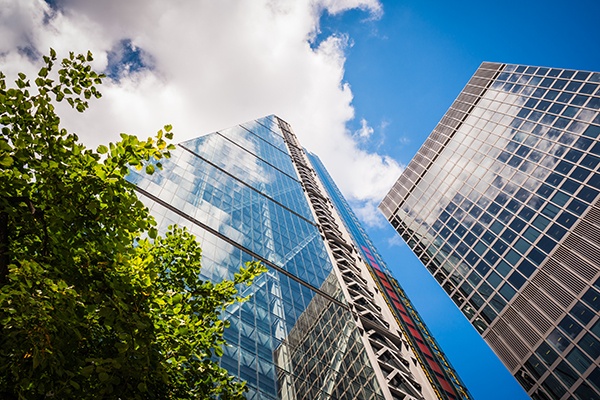
Selecting the ideal commercial space requires extensive forethought and planning before a corporate tenant signs a lease. One of the most important aspects of consideration is whether the building in question is LEED certified. The certification is primarily used to determine whether the building is “green”.
Quite simply, a green lease is a real-estate opportunity that presents both qualitative and quantitative benefits to everyone: landlords, tenants and not least, the environment. So, what are the benefits of choosing a green building to a corporate tenant? Well, here are the top benefits to leasing a LEED certified building:
Reduced Utility Consumption
One of the requirements for qualification for LEED certification is proof of being energy efficient. An energy-efficient building is one that has incorporated easy-to-implement sustainable measures that reduce the cost of water, gas, electricity and HVAC systems. These green measures greatly help to reduce utility consumption, thus generate immediate savings.
Boosts Corporate/Brand Image
A broad range of stakeholders, including investors, employees, customers, governmental officials and the media, are increasingly concerned about what a business is doing to – or for – the environment. Opting to lease a LEED certified building is an ingenious way to distinguish your brand as one that makes a positive commitment not only to the viability of the company, but also to the environment. This gives corporate tenants competitive advantage in their respective industries.
Enhances Employee Recruitment, Retention and Productivity
While the gains that employees obtain from green leases are at times considered as a “soft” benefit, they can equate to cost avoidance and great savings for companies over time. Companies that carryout their operations in lease certified buildings easily recruit and retain their employees. This is because most people consider such places to be safe and highly conducive working environments.
Studies show that employees in such eco-friendly environments are 5% more productive, with about 3% fewer sick days. Reduced time off the job due to health problems related to uncontrolled environments reduce productivity. This is a problem that companies operating in LEED certified buildings rarely have.
Improved Waste Control
Owners of LEED certified buildings make green lease provisions that promote moderate and careful consumption of goods, recycling of waste and composting. Studies show that best practices in waste control can help to increase waste diversion rates of up to 80% or more. Besides corporate tenants being in a position to significantly reduce waste handling costs, they can sell recycled materials and cut on occupancy costs.
According to the Environmental Protection Agency, buildings are responsible for about 30% of all greenhouse gas emissions in the United States. As a result, scientists overpoweringly recommend that measures be taken to overturn human contributors to global warming. This means that leasing a LEED certified building isn’t just the smartest thing for corporate tenants to do - it is the right thing to do. Improving workplace sustainability is a good opportunity for business to do something good not just for their business, but also for the environment and the society.
Here are a few other articles to check out:
Do You Need New Office Space?
Top Reasons to Go Green with a LEED Certified Building
5 Ways to Optimize Your Office Design for Millennials
Subscribe to the REoptimizer® blog for more great tips!!








